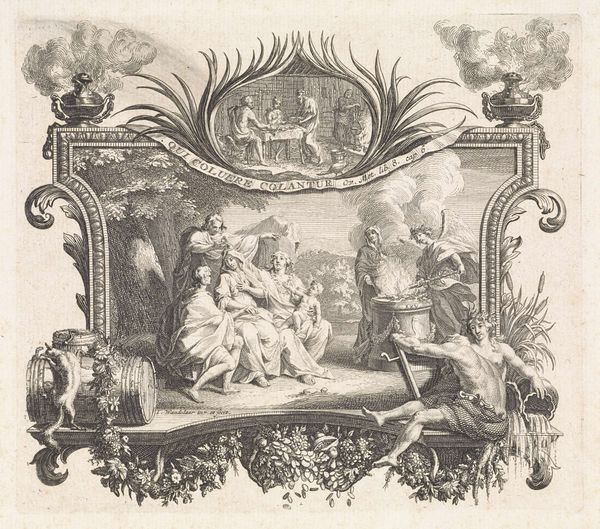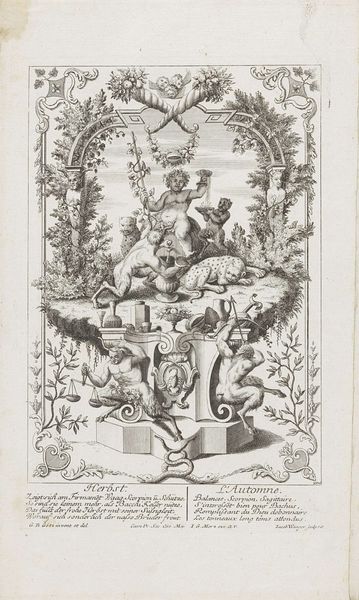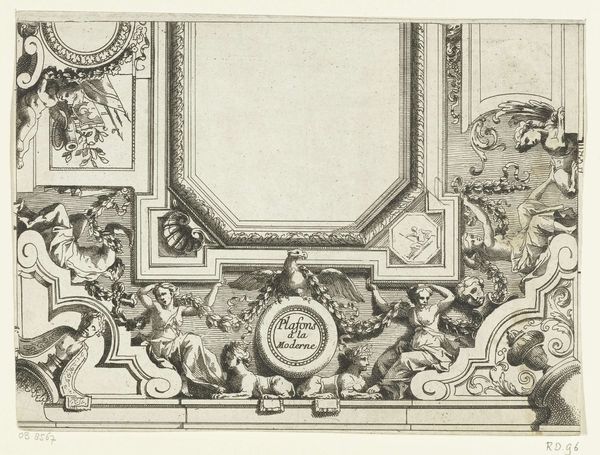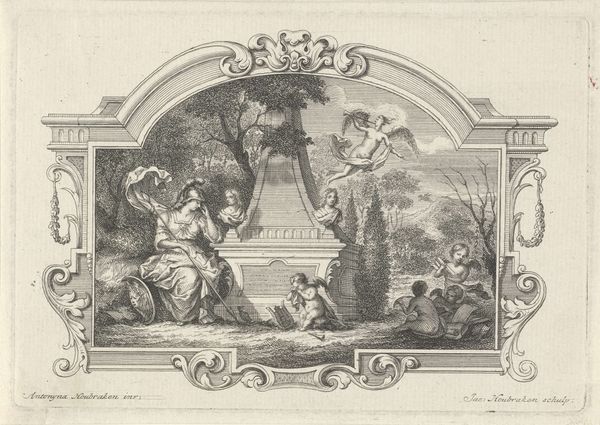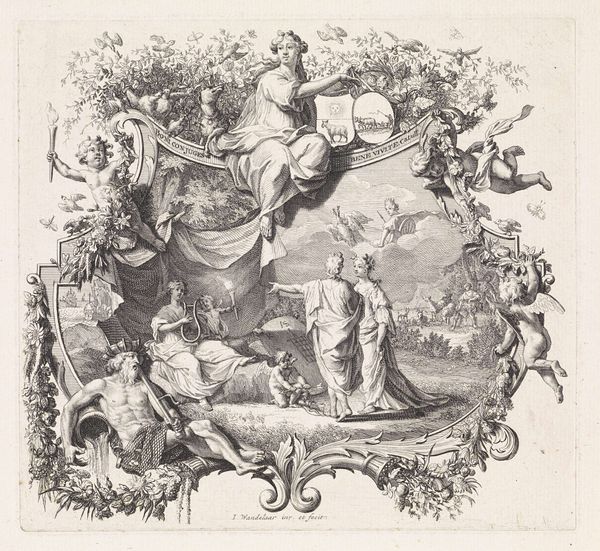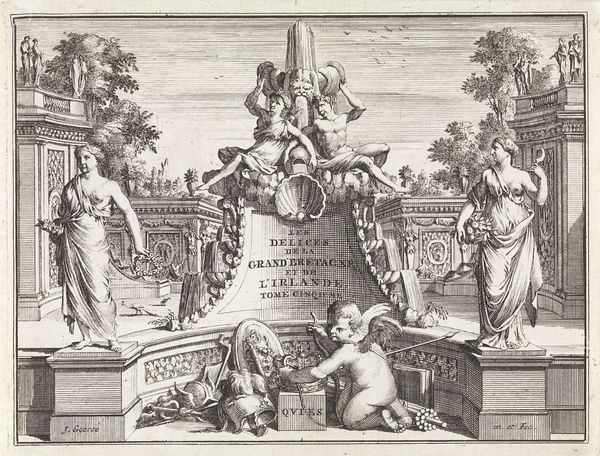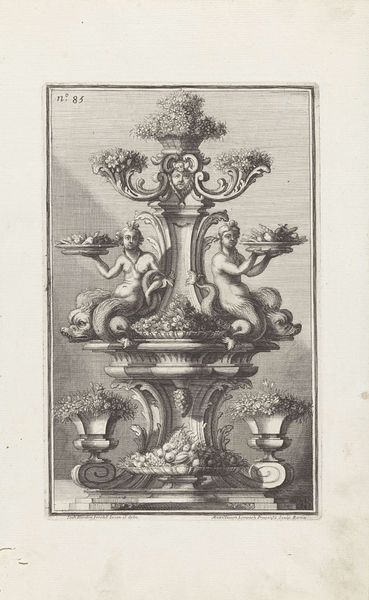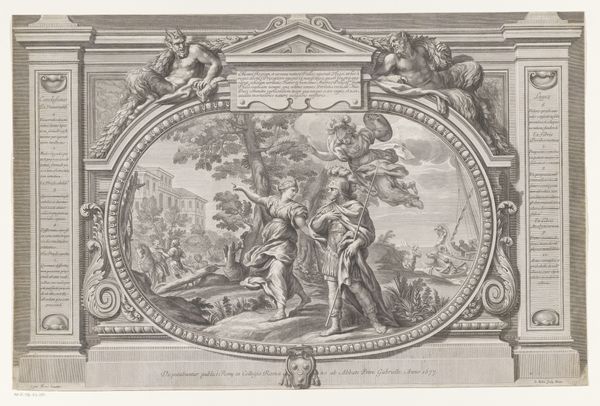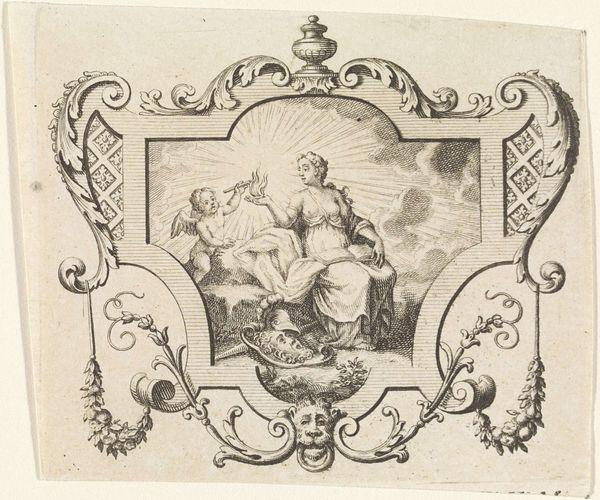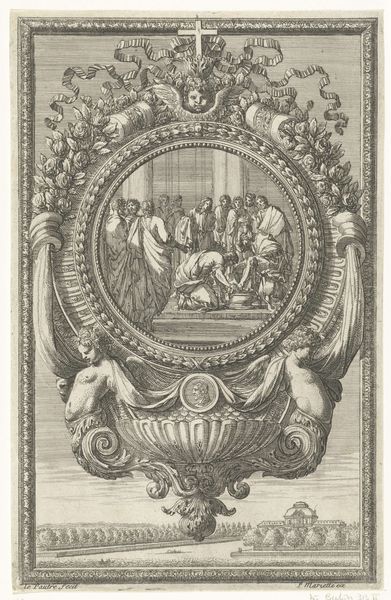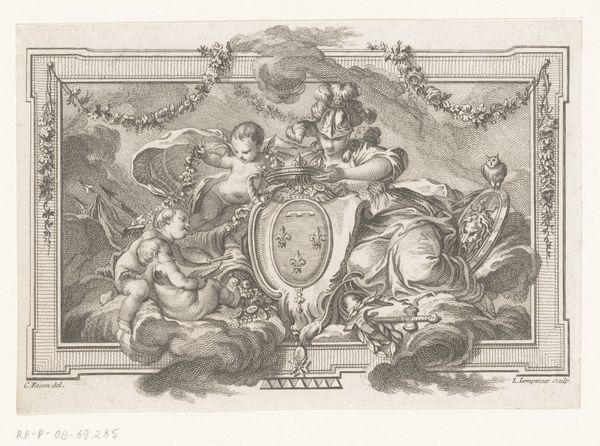
Wapen van de Verenigde Nederlanden omgeven door Mercurius en Minerva 1718
0:00
0:00
metal, embossing, engraving
#
allegory
#
baroque
#
metal
#
old engraving style
#
traditional media
#
11_renaissance
#
embossing
#
history-painting
#
engraving
Dimensions: height 134 mm, width 187 mm
Copyright: Rijks Museum: Open Domain
Curator: Welcome. Here we have an engraving by Bernard Picart, dating back to 1718. The title, "Wapen van de Verenigde Nederlanden omgeven door Mercurius en Minerva," translates to "Coat of Arms of the United Netherlands Surrounded by Mercury and Minerva." Editor: My first impression? It's incredibly ornate, bursting with symbolism. Almost excessively so! The sheer volume of cherubic figures is a bit overwhelming at first glance. Curator: Absolutely. Consider its context. This engraving would likely have served a specific political function, aimed at conveying messages of power, prosperity, and divine favor upon the Dutch Republic. Think about the social impact, a display of strength via artistic representation. Editor: It’s a bold declaration of nationhood and commercial power during the Baroque period. The figures of Mercury, god of commerce, and Minerva, goddess of wisdom and warfare, practically scream Dutch ambition. It would definitely sit well with a white aristocratic male in that timeframe. Curator: Precisely! It represents more than simple aesthetics; it embodies Dutch aspirations and their vision of themselves. Observe the detailed lion on the shield, a traditional symbol of the Netherlands, prominently displayed under a royal crown, supported by the cherubs representing virtues and strength. Editor: Yet it’s impossible to overlook the blatant exclusivity inherent in this representation. Where is any acknowledgement of the colonized territories whose wealth funded this ‘prosperity’? It perpetuates a narrative of power that conveniently omits the violence and exploitation underpinning it. Curator: I concede that an engraving like this does have to be examined critically. We can also recognize that Picart and those of his time had a narrow interpretation of society's image. They glorified power through classical symbolism and emphasized national identity without fully reckoning the impact of colonial exploits. Editor: And I will be here to analyze the political climate where historical accuracy in the artistic language should have had better emphasis, not just cater to political goals. Curator: I am glad you could highlight for me what may need deeper inspection and evaluation. Editor: And I can continue to broaden the understanding of the beautiful but sometimes problematic representation of our civilization's artistic expression.
Comments
No comments
Be the first to comment and join the conversation on the ultimate creative platform.

